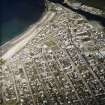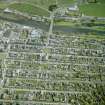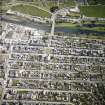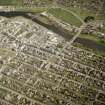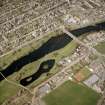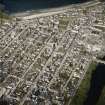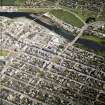Thurso, General
Burgh (17th Century), Town (13th Century)
Site Name Thurso, General
Classification Burgh (17th Century), Town (13th Century)
Canmore ID 8488
Site Number ND16NW 65
NGR ND 11589 68513
NGR Description Centred ND 11589 68513
Datum OSGB36 - NGR
Permalink http://canmore.org.uk/site/8488
- Council Highland
- Parish Thurso
- Former Region Highland
- Former District Caithness
- Former County Caithness
ND16NW 65 centred 11589 68513
Erected burgh of barony (Earl of Caithness) 27 July 1633.
G S Pryde 1965.
ND16NW 65 11589 68513
REFERENCE - Scottish Record Office
Estimate of a new house for William Sinclair of Freswick.
Estimate is for 120 pounds. Elevation drawn.
1816 GD 136/873
Account for Mason and Wright work done on a house for William Sinclair
of Freswick. Total sum
William Henderson Architect? Factor?
1818-19 GD 136/875/21-22
1820 23.
REFERENCE - Scottish Record Office
Thurso, House
Account for wright work done for William Sinclair of Freswick by John Shearer and James Ross 'in the house now possessed by the said William Sinclair'.
Work is now undertaken both in the main House and the Wings.
1817-1820 GD 136/875/11
Thurso. Freswick dwelling house in Thurso.
Estimate for carpenter and plaster work, for the addition intended to be built at the West end of the dwelling house.
Total amount 70.0.8.
[Early 19th century] GD 136/823
[?Thurso] Balusters for William Sinclair of Freswick's House.
Letter of apology from W Miller to William Henderson, Writer.
The balusters had not been ready for shipping from Leith.
1819 GD 136/875/10
Alterations and additions carried out on William Sinclair of Freswick's new dwelling house.
Account and note of payments to Daniel Taylor, Mason, for building stairs, taking down the wall between the staircase and the main stair, taking down the arch and wall in the low flat, building up scuntions, inserting 18 polished chimneys and hearths and hewing and polishing old hearths.
1819 GD 136/875/9
Carriage of building materials for the Main House and the New Wing of William Sinclair of Freswick's 'new dwelling house'. Account for carting sand and receipt for freight of sundries.
1818-1819 GD 136/875/7-8
Photographic Record (October 1961)
Photographic survey of buildings in Thurso, Caithness by the Scottish National Buildings Record in October 1961.
Publication Account (1995)
Thurso was a settlement in Norse times and two characters prominent in the Sagas were killed there, Moddan in the 11th century and John, Earl of Orkney, in 1231, murdered in the cellar of a house where he had hidden. Little is heard of Thurso after this until it became a free burgh of barony in 1633. The old part of Thurso lay north of Olrig Street, where one old house dated 1687 with a round stair tower still remains at nos 16-18 Shore Street. Old St Peter's Church in Wilson Lane is the medieval parish church, much altered in the 17th century when it was filled with lofts (one loft front is preserved in St Peters and the Holy Rood). It now stands roofless (key from Municipal Offices, Rotterdam Street). The tracery window in the south gable is typical 17th century Gothic. At the east end is the apse of the medieval church, formerly walled off as a burial vault. The tower is dated 1638 or 1640, and had a session room above reached by a private spiral stair. Later it was let out to the Town Council who used it variously as a prison and a council chamber.
In 1735 the town was described as 'A neat fashionable little town ... with one principall street, severall wynds and sufficient buildings in it'. It was then the market for a good part of the country's produce and dealt in corn, cod and ling. Thurso expanded greatly in the early 19th century, when a New Town was laid out by Sir John Sinclair of Ulbster, the originator of the Statistical Accounts. Its grid pattern of streets is still clear, centred on Sinclair Street and Sir Johns Square. Many of the original houses still stand, and this is an attractive area to walk round, particularly on a summer evening when the traffic has stopped. The grandest houses are in Janet Street, looking out over the river, some still having stables and gighouses behind. The streets filled up gradually: thus most of Janet Street was built in 1800-10, but Campbell Street only in 1820-30.
At the end of Sinclair Street stands a classical building with portico and domed tower, the former Miller Academy, designed by W Scott of Edinburgh and donated by the Rev Alexander Miller in 1859, where boys were taught English, Mathematics, Latin, Greek and French. The Town Well in Meadow Lane is covered by a circular wellhouse with conical roof dated 1822, while the pump inside was installed in 1850. In Manson's Lane, nos 22 and 24 are the Old Brewery and the Brewer's House, part of Sinclair's planned town. The brewery is open-plan inside, the upper floors supported on wooden pillars. On the east bank of the river at Millbank (ND 115677), there is a fine group of late 18th- and 19th-century mill buildings, the miller's house with a castellated facade (now a youth centre); next to them is the old Millbank Foundry.
In the High Street adjacent to the former Town Hall is Thurso Museum. Among the exhibits is a relic of Norse Thurso, a rough stone cross intended to be laid on a grave with a runic inscription '(name missing) ... nade this overlay for his father Ingulf', perhaps 11th century in date, also two Pictish cross-slabs from Ulbster and Skinner. On the east side of Thurso, and seen from the coastal path, is the modern Thurso 'Castle' of 1872 with a castellated gateway and lodge, replacing a mansion of 1660. Near it is the base of a concrete tower known as Lady Janet's Seat. East of Thurso (ND 135692), and to be seen only from a distance unless with permission, is Harold's Tower, a curious hexagonal mausoleum with pencil turrets at the angles, erected by Sir John Sinclair around 1790-98 to commemorate Earl Harold who was killed in battle in 1190 and buried nearby.
Information from ‘Exploring Scotland’s Heritage: The Highlands’, (1995).











































